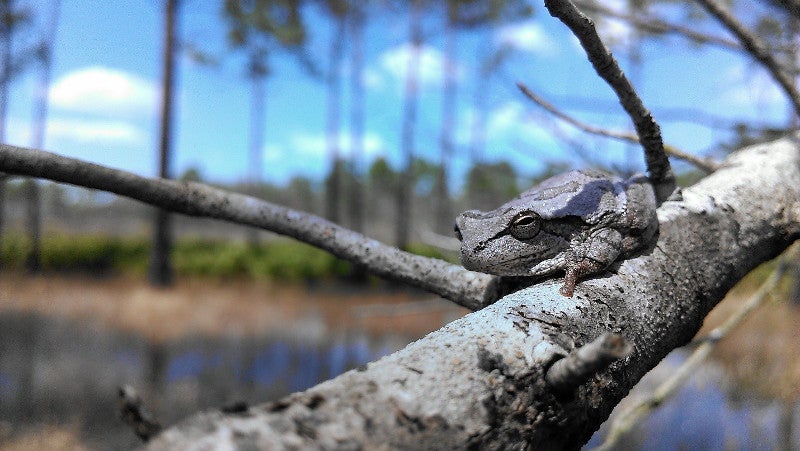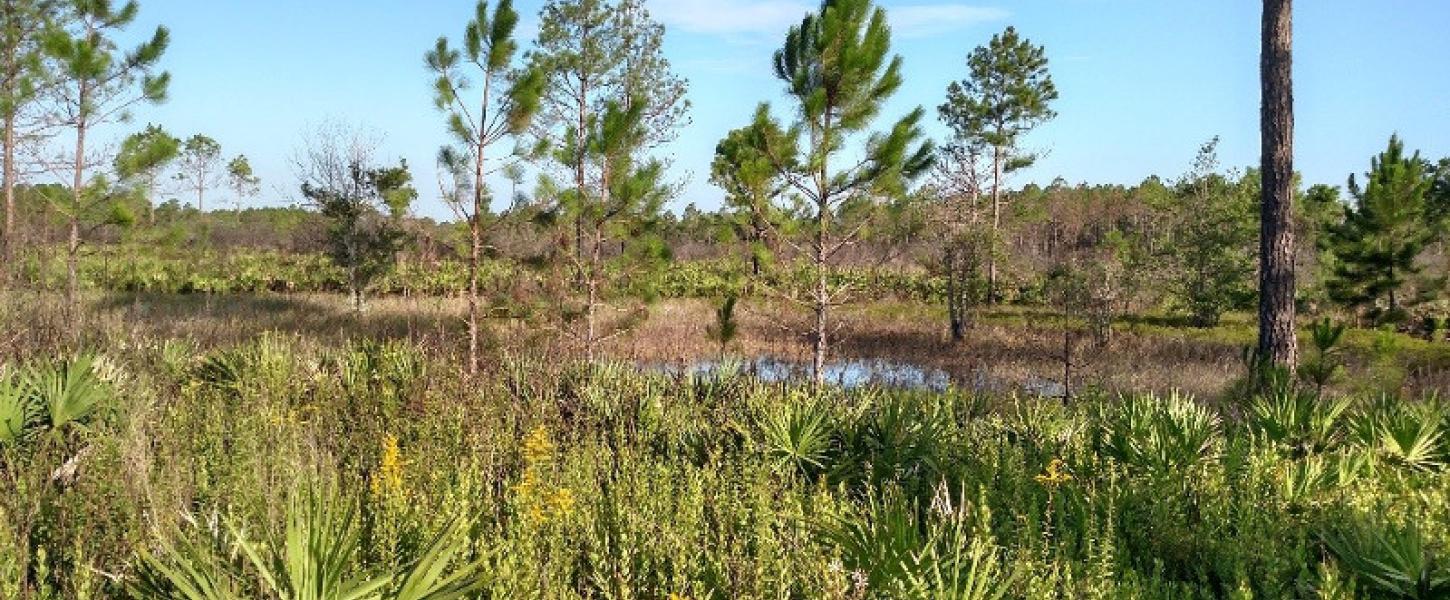
Wet and Wild Places of Pumpkin Hill

Pumpkin Hill Creek Preserve State Park is perhaps best known for being the largest expanse of pine uplands in Jacksonville. But did you know that it is also interspersed with numerous wetlands and streams of different shapes and sizes?
These areas are habitat for many imperiled plants and animals. The smallest wetlands, called depression marshes, are home to species like the striped newt, hooded pitcher plants, butterworts and countless frogs.

Wood ducks, mole salamanders, pondspice, eagles, water moccasins and even more frogs can be found in the larger basin swamps. Other notable features in the area include the blackwater streams and alluvial forests. These are reached through the Jim Wingate Preserve parking area and along the Blue Circle Trail.

The reason that Pumpkin Hill was set aside as a preserve - the highest protection a state park can have - was to conserve its wetlands and the watershed. A unique and very important feature of Pumpkin Hill is the filtration process that cleans the surface water for two river basins.
You may notice a slight ridge that runs from the main parking lot out and up the Red Square Trail toward Boney Road. The wetlands and uplands to the north of this ridge filter water for the Nassau-St. Marys river basin, and the area south of the ridge filters for the lower St. Johns River basin.
You can see evidence of the ridge by looking at the color of the soil underneath you. The white sugar sands are at the highest elevation, while the dark mud is found at the lowest points. Both rivers provide drinking water in and around Jacksonville as well as other essential functions.
Not just a series of beautiful upland pine forests, Pumpkin Hill is a must-see for its wetland features as well. We have a lot to thank Mother Nature for, and nowhere is it more evident than at this complex and wonderful ecological preserve.